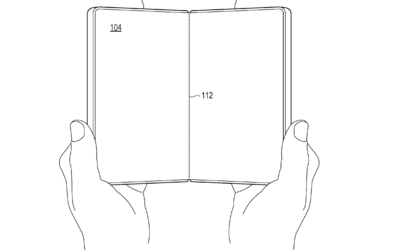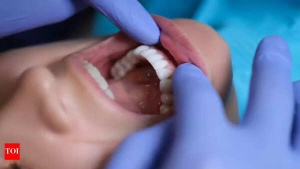Microsoft is reportedly exploring a new direction in the foldable smartphone market, aiming to compete with industry giants like Apple and Samsung. Despite the discontinuation of the Surface Duo series, the tech giant's ambition in the mobile device sector remains undeterred.

The company has filed a patent application with the United States Patent and Trademark Office on February 29, showcasing a novel approach to foldable devices. The patent details a unique single-hinge technology, dubbed the "spine cover plate," intended to enhance the durability and aesthetics of foldable smartphones.
The patent application suggests a design reminiscent of the Samsung Galaxy Z Fold, featuring a book-style folding mechanism with a flexible display. The core innovation lies in the spine cover plate, designed to shield the single-hinge system and protect the structural integrity of the device.
The key differentiator between conventional hinges and Microsoft's design is the spine cover's ability to automatically adjust during opening and closing. This mechanism aims to eliminate gaps around the hinge, preventing the ingress of dust and water. While Samsung's current foldable devices boast an IPX8 rating for water resistance, Microsoft's design potentially offers enhanced protection.
According to the patent, this new hinge mechanism could also minimize the hinge crease, a common concern with existing foldable smartphones.
Furthermore, Microsoft is exploring techniques to reduce the overall thickness of the foldable smartphone. The spine cover plate is designed to move closer to the device's hinge when folded.
Microsoft explains in the patent that retracting the spine cover plate toward the central spine as the display-supporting frames rotate enables a reduced width for the folded device. This facilitates easier and more comfortable handling, particularly with one hand.
While the industry seeks solutions to eliminate the foldable crease, some manufacturers have adopted water-drop folding mechanisms to mitigate this issue. Durability remains a paramount concern for foldable devices due to their numerous moving parts.
The addition of another layer or movable component to the foldable mechanism raises questions about its practicality, despite the advantages and enhanced durability outlined in Microsoft's patent application.
Newer articles
Older articles
 Wimbledon 2025: Streaming Guide for India & US Viewers - Dates, Prize Money & New Tech
Wimbledon 2025: Streaming Guide for India & US Viewers - Dates, Prize Money & New Tech
 Greg Chappell: Rishabh Pant is Redefining Cricket with His Fearless Batting
Greg Chappell: Rishabh Pant is Redefining Cricket with His Fearless Batting
 Vijay Sethupathi Responds to Controversy Surrounding Son Surya's Film Debut 'Phoenix'; Apologizes if Anyone Was Hurt
Vijay Sethupathi Responds to Controversy Surrounding Son Surya's Film Debut 'Phoenix'; Apologizes if Anyone Was Hurt
 Smith Set for Second Test Comeback After Unique Baseball Cage Recovery
Smith Set for Second Test Comeback After Unique Baseball Cage Recovery
 Spotting Prediabetes: Key Warning Signs Your Body May Be Sending
Spotting Prediabetes: Key Warning Signs Your Body May Be Sending
 Daren Sammy Fined for DRS Criticism After West Indies-Australia Test
Daren Sammy Fined for DRS Criticism After West Indies-Australia Test
 JPG to PDF: A Graphic Designer's Guide to Conversion on Desktop and Mobile
JPG to PDF: A Graphic Designer's Guide to Conversion on Desktop and Mobile
 Google Unveils Strategy to Bolster 2024 Indian Elections: Combating Misinformation and Promoting Voter Access
Google Unveils Strategy to Bolster 2024 Indian Elections: Combating Misinformation and Promoting Voter Access
 Tiêu đề:
Oral Cancer: Know the Signs, Risk Factors, and Why Early Detection is Critical
Tiêu đề:
Oral Cancer: Know the Signs, Risk Factors, and Why Early Detection is Critical
 X Cracks Down: Half a Million Indian Accounts Suspended for Policy Breaches
X Cracks Down: Half a Million Indian Accounts Suspended for Policy Breaches